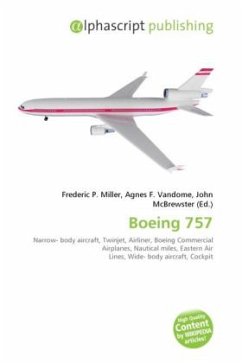
Boeing X-50
Versandkostenfrei!
Versandfertig in 6-10 Tagen
23,99 €
inkl. MwSt.

PAYBACK Punkte
12 °P sammeln!
Please note that the content of this book primarily consists of articles available from Wikipedia or other free sources online. The Boeing X-50 Dragonfly, formerly known as the Canard Rotor/Wing Demonstrator, was a gyrodyne unmanned aerial vehicle that was developed by Boeing and DARPA to demonstrate the principle that a helicopter''s rotor could be stopped in flight and act as a fixed wing. The X-50A built upon the work of the Sikorsky S-72 X-Wing program of the 1980s by designing the vehicle as a multi-mode aircraft from the ground up. The X-50A was one of two projects funded by DARPA in its...
Please note that the content of this book primarily consists of articles available from Wikipedia or other free sources online. The Boeing X-50 Dragonfly, formerly known as the Canard Rotor/Wing Demonstrator, was a gyrodyne unmanned aerial vehicle that was developed by Boeing and DARPA to demonstrate the principle that a helicopter''s rotor could be stopped in flight and act as a fixed wing. The X-50A built upon the work of the Sikorsky S-72 X-Wing program of the 1980s by designing the vehicle as a multi-mode aircraft from the ground up. The X-50A was one of two projects funded by DARPA in its "Heliplane" program. Neither of the two prototype aircraft ever successfully transitioned to full forward flight. DARPA withdrew funding for the X-50 program in late 2006 due to inherent design flaws. The X-50A was a joint program between Boeing and DARPA, with each paying for half the development costs. The X-50A was powered by a single conventional turbofan engine. For rotary-wing mode, the engine''s exhaust was diverted to nozzles in the tips of the rotor blades.












